Have you ever dreamed of grabbing your backpack and traveling to Thailand on your own? Do you want to experience those paradisiacal beaches, cities filled with temples, and tropical landscapes without spending all your savings? More and more people are visiting this Asian destination, and more and more are daring to explore it on their own. Do you want to be one of them?
After many visits to the country and months living in a couple of its cities, we can attest that Thailand is one of the easiest countries to explore and perfect to start your backpacking journey. In this guide, we will explain how. Read carefully!
In Thailand, there’s something called “Visa Exempt,” which means you can stay for 60 days (if you enter by air or land) without the need to obtain a visa, and it’s free of charge. However, if you wish to stay in the country for a longer period, you will need to apply for a Thailand visa.
We explain everything in an easy and practical way in the previous link (coming soon), along with links to articles where we explain how to obtain a visa if you are in other Southeast Asian countries.
And if you’re so comfortable that you decide to stay longer, you can extend your visa in various places.
If you’re already thinking about a trip to Thailand, we’re sure you’ve started looking for flights to Bangkok to get an idea of the price range. That’s why we’re going to leave you some tips when looking for cheap flights to Bangkok and be able to take advantage of the savings you make to spend in the country.
In the previous link, we show you step-by-step the process to save on your flights. Check it!
To begin with, we always recommend getting good travel insurance Thailand. This can save you a significant amount on medical expenses and, most importantly, ensures that the insurance covers the costs upfront, so you don’t have to pay out of pocket.
In the previous article, we go into more detail about healthcare in Thailand, as well as tips on how to get the best insurance (and save money).
The optimal time to visit Thailand is between November and early April. During these months, the weather is pleasantly cool and dry, making it perfect for exploring cities, beaches, and cultural sites. This period also coincides with several vibrant festivals and events, adding to the appeal.
If you’re looking for a quieter experience and don’t mind the occasional heavy rainfall, consider traveling during the rainy season from June to October. This time brings lush greenery and fewer crowds, though you should be prepared for sporadic downpours.
The hot season, from March to June, can be quite intense with high temperatures, particularly in Central and Northern Thailand. Coastal regions, such as the Southern Islands, remain somewhat cooler and are still a good option if you’re seeking sun and sea.
Travel Tip: Check out our article on the best time to visit Thailand for month-by-month climate information.
Nowadays, finding hotels, guesthouses, or restaurants in Thailand with free Wi-Fi is pretty common. However, there are still those who prefer (or need) to stay connected at all times.
That’s why we’ll show you how to get an eSIM Thailand card with internet— now also available with unlimited data.
Certain vaccines are recommended depending on the type of trip and the duration of your stay.
The best approach is to schedule an appointment at an international vaccination center well in advance, as waiting lists can be long. There, specialized doctors can advise you, answer all your questions, and provide tailored recommendations. In addition, they will give you essential information on preparing your first aid kit and preventing diseases with basic precautions.
Knowledge is power—once you have all the necessary information, you’ll be able to make the best decision for your trip.
Phuket is the largest and most touristy island in Thailand. It has plenty of reasons to attract visitors, with its beaches ranging from kilometers-long stretches to just a few meters. However, its allure has captured the interest of tourists from around the world to the point where some consider it a lost paradise.
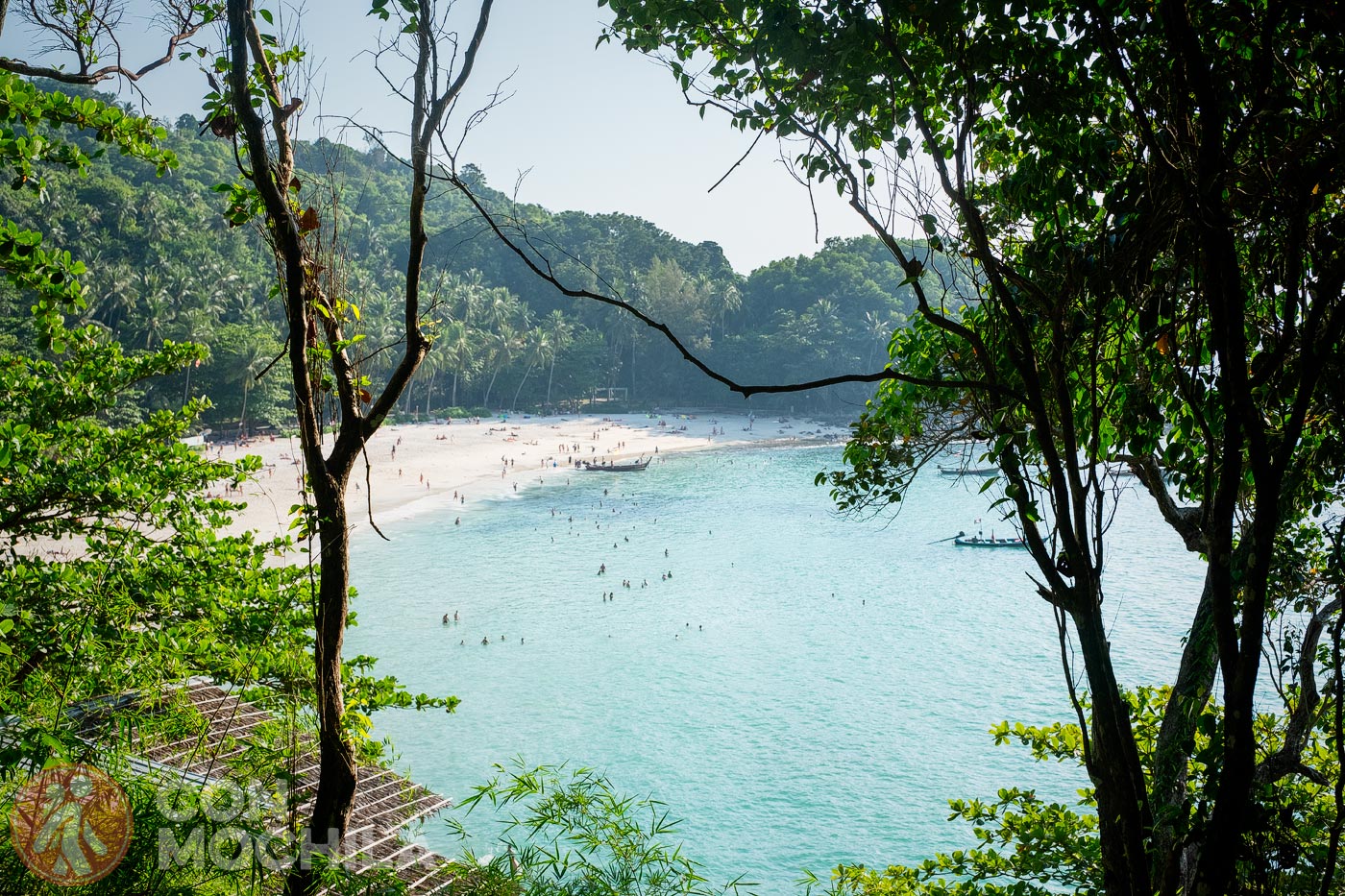
Finding secluded corners is impossible, although if you’re willing to move around, you can discover less crowded places. If you’re looking for tranquility, Phuket might not be the best option, but if you’re seeking a beach and party destination, you’ve come to the right place.
Koh Phi Phi boasts some of Thailand’s most beautiful coves. However, if you’re planning to explore the Andaman Sea and revel in the splendor of this archipelago, it’s best to know the ins and outs of this location to avoid disappointments.
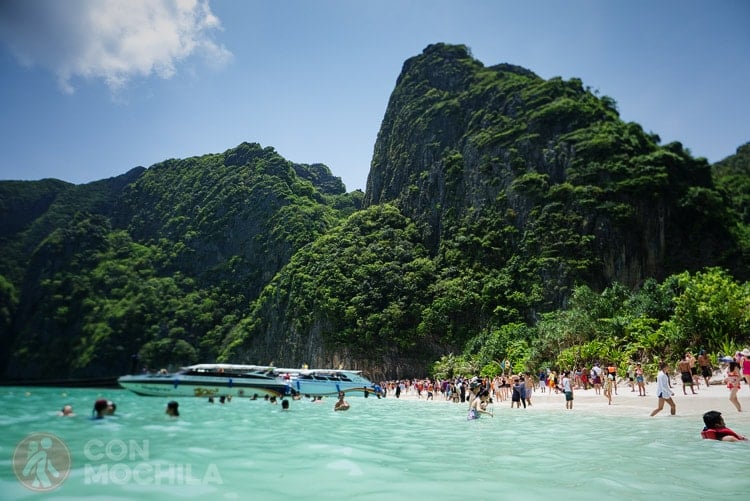
This archipelago is perhaps the most desired by mass tourism visiting Thailand, partly because its islands host Thailand’s most famous beach, Maya Bay. As a result, these islands, though stunning, can be quite crowded.
The island of Koh Phangan is renowned for the famous Full Moon Party and is the middle one among the three largest islands in the Gulf of Thailand archipelago.
Despite its fame, not everything on this island revolves around parties. Travelers can choose between small and quiet beaches, perfect for days of relaxation away from the rest of humanity, and other more vibrant beaches where you can do all kind of activities and have the best party of your life.
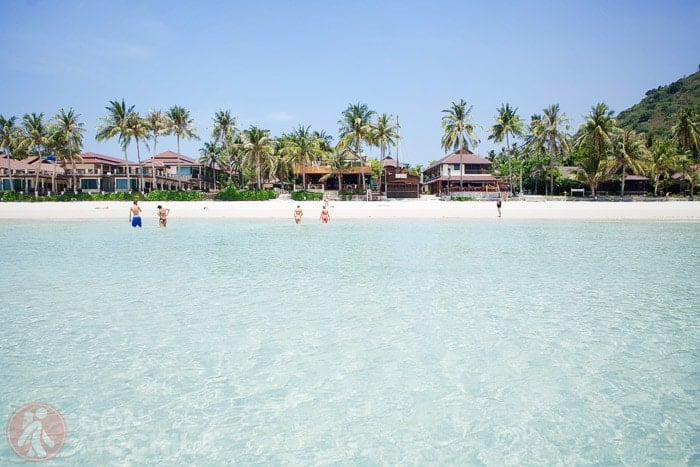
But one thing they all have in common is their tremendous beauty, which will make you dream about the days you spent in Koh Phangan for the rest of your life.
If Phuket is the largest and most developed tourist island in Thailand, then Koh Samui is its direct rival. They share many characteristics: considerable size, an abundance of roads, shops, gigantic resorts, hospitals, an array of party bars, and, of course, a variety of beaches, some heavily crowded and others more secluded.
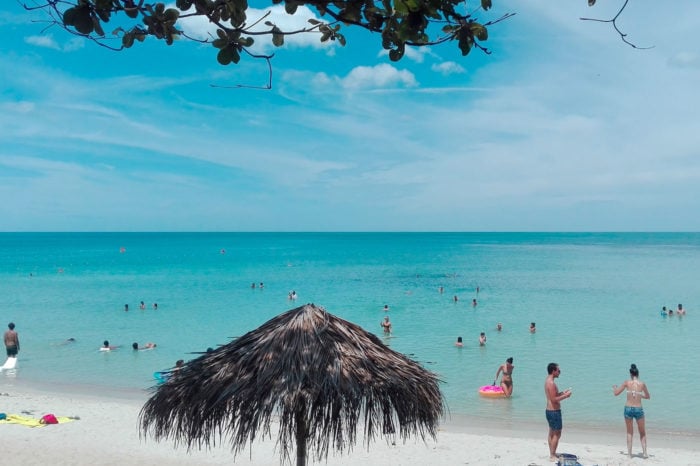
What sets Koh Samui apart? First, its relative seclusion and manageable size, allowing you to explore it in a day. Getting to the Gulf of Thailand archipelago is more expensive and challenging than reaching many other destinations, which has kept the level of mass tourism lower. It’s often said to be expensive as well, but that’s mostly true for the central area.
The most beautiful scenes of the Thai sea embracing fine sandy stretches surrounded by tropical jungles are found on the islands. However, Krabi is a peninsula on the mainland, and it’s perhaps the only one of notable beauty alongside Hua Hin.
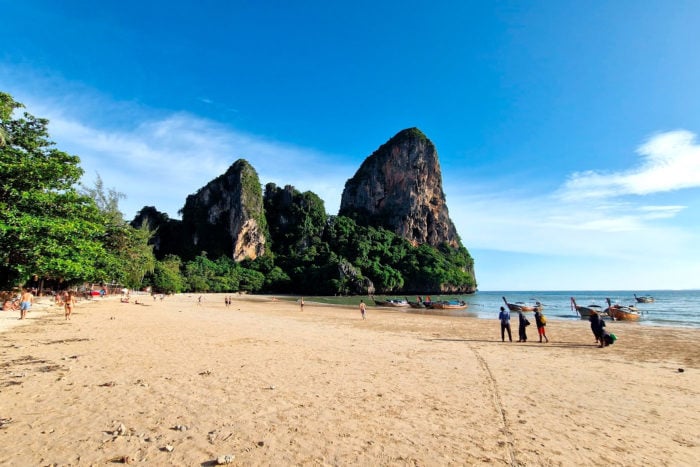
What makes the province of Krabi unique is that, despite not having the country’s best waters, it does have exceptional lakes and mountains. It’s also an ideal location for witnessing the most spectacular beaches of the Andaman Sea. If you’re interested in tours, this is the perfect spot.
Situated in the Gulf of Thailand, Koh Tao is the smaller sister of Koh Samui and also our favorite. If there’s one thing this island is known for, it’s its crystal-clear waters and underwater fauna that have made it one of the primary destinations for scuba diving courses in Thailand.
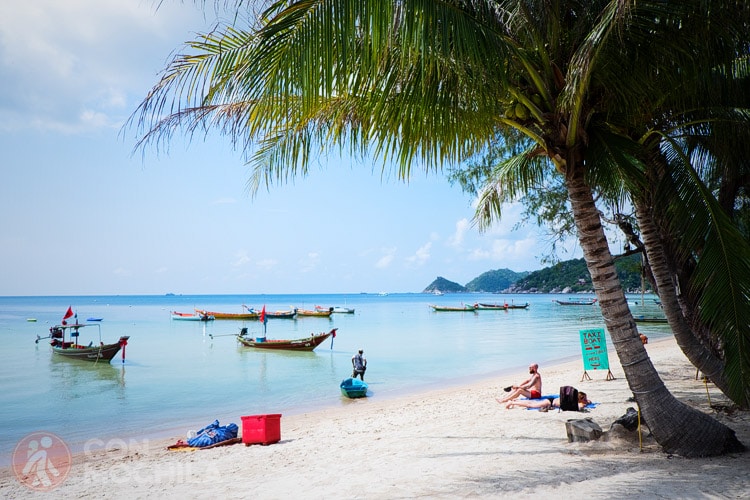
But if scuba diving isn’t your thing, Koh Tao also offers several beaches where you can snorkel and explore the underwater world. Rent a motorbike, get some goggles and a snorkel kit, grab a map from the 7-Eleven, and explore the island.
Koh Lipe is one of the islands in the Adang Archipelago located in the Andaman Sea, southwest of Thailand. It’s part of the Tarutao National Marine Park, and its inhabitants are the Chau Leh, a nomadic ethnic group with a life closely tied to the sea, commonly known as the sea gypsies.
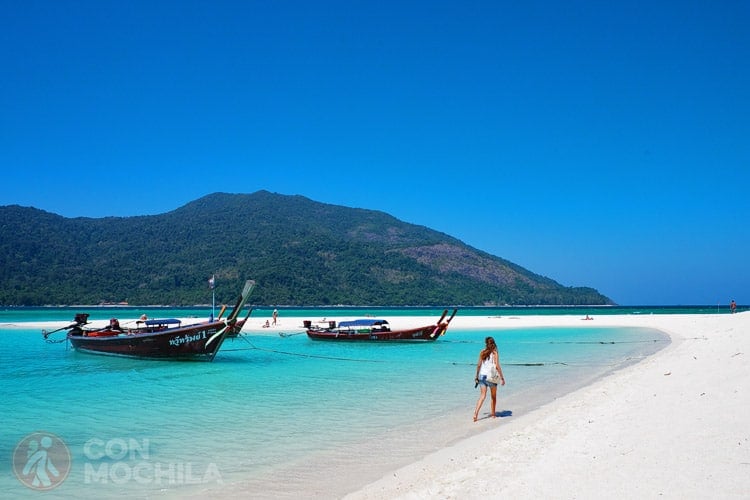
The island is so small that you can walk from one end to the other without getting too tired. Its three major beaches are true wonders, with Pattaya and Sunrise beaches featuring white, powdery sand as fine as flour, turquoise waters, and coral reefs. It’s truly spectacular!
Comprising a group of islands in the Andaman Sea, southwest of Thailand, and belonging to the Krabi province, Koh Lanta is a perfect destination for restiing a few days without getting bored. Its lower popularity and tourist influx help it maintain its unique character.
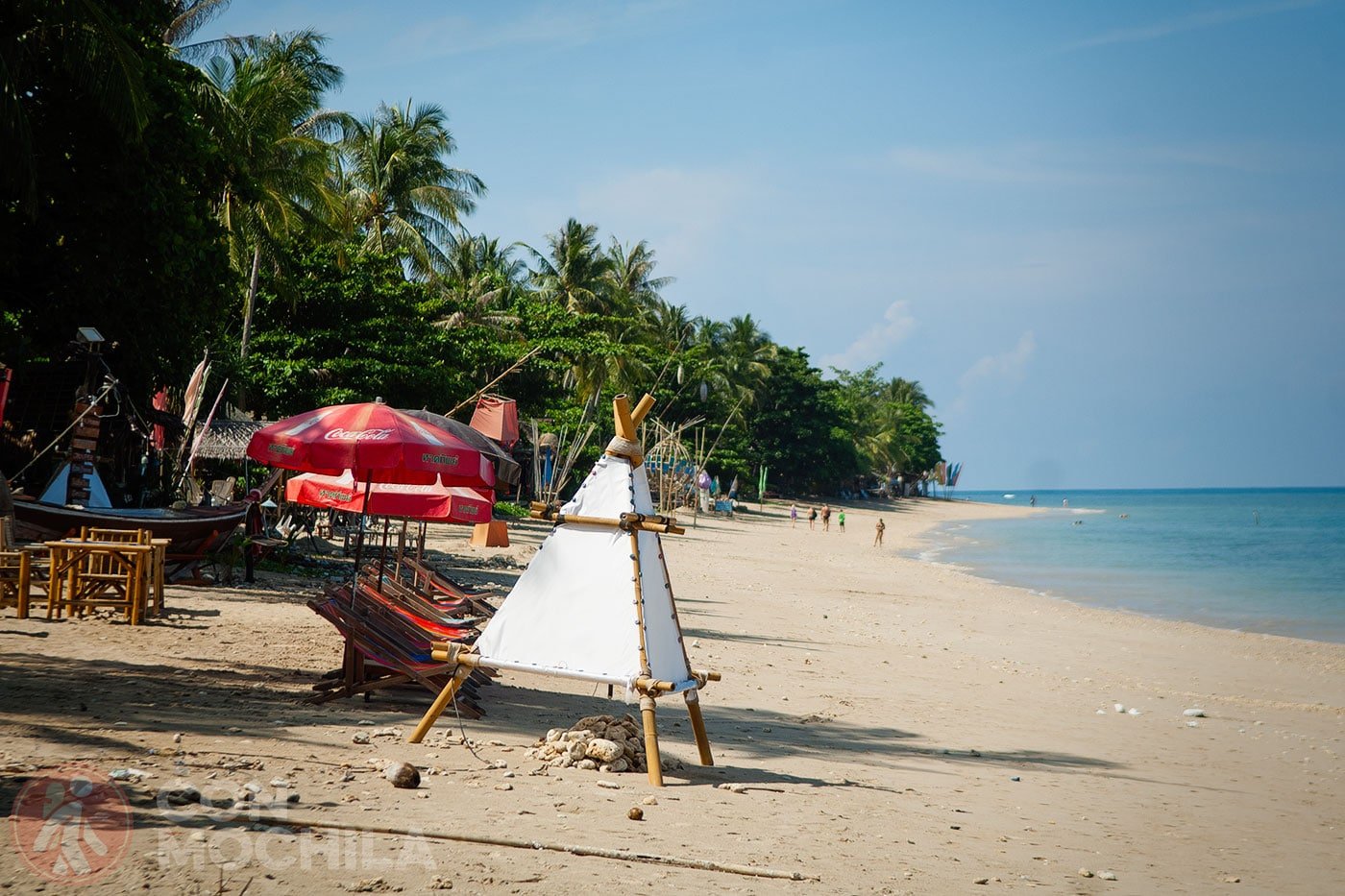
Blessed with long beaches adorned with coconut trees and bars playing continuous chillout music, Koh Lanta Yai, the largest island in the archipelago, attracts families, couples, and solo travelers seeking peace after weeks of hectic travel.
The once lesser-known island of Koh Phayam, with its peaceful atmosphere and nearly untouched natural beauty, has now become the perfect destination for those looking to escape the hustle and bustle of Thailand’s more touristy and crowded areas.
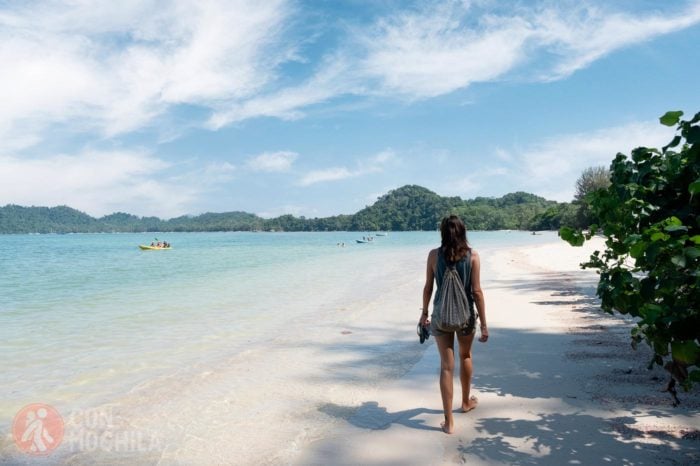
Very close to the Myanmar border, once home to the Moken and a haven for the most bohemian, Koh Phayam now hosts those who dream of finding a corner of the country that still holds a piece of what travelers used to discover when only a few daring souls grabbed their backpacks and ventured into the most hidden places of Southeast Asia, though that may now be just an illusion.
Koh Yao Yai is a Thai island which name hints at its size, indicating that it’s big and extensive. However, when compared to the enormous Phuket, its dimensions are relative.
What this destination does offer is an almost deserted island, with beautiful pristine beaches and spectacular vegetation. Don’t go there looking for parties or crowd, as it is ideal to relax or to be alone. Or close to it.
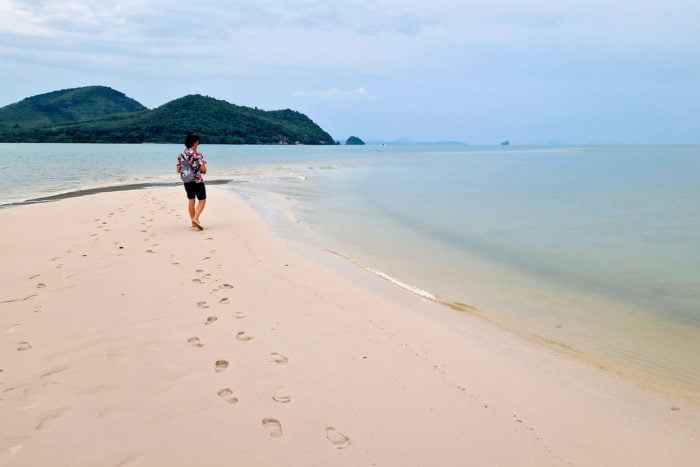
It’s even surprising that tourism has given this Thai island a break, as it’s home to one of the most beautiful stretches of sea in the country. Remarkably, there isn’t a single bar, beach shack, or even street vendors on the island.
Very popular among Russians, Chinese, as well as Thais, Koh Larn is a small island off the coast of Pattaya. Some guides omit mentioning it due to the tourist invasion it once suffered and its proximity to a city known in the West for its reputation in the sex tourism industry.
However, letting these biases make you forget about this beach destination would be a mistake.
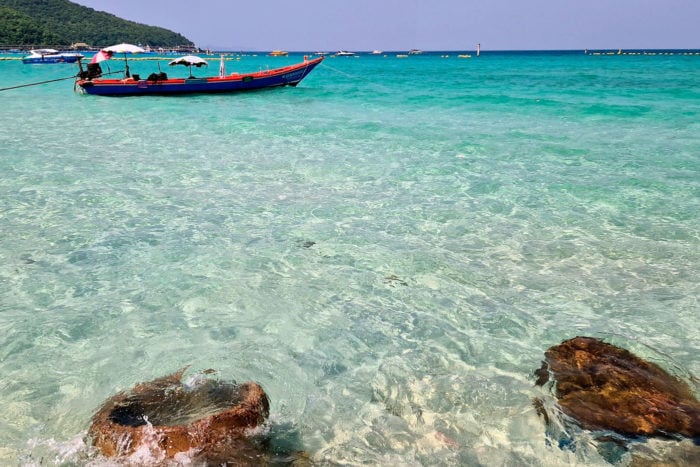
Koh Larn boasts genuinely beautiful vegetation and beaches. If you venture beyond the main bay – which, during high season, can indeed resemble a theme park – you’ll find lovely cafes with views, small eco-friendly hotels, beaches with few people, and some genuinely picturesque local areas.
Despite being Thailand’s second-largest island, Koh Chang, located in the Gulf of Thailand, often goes unnoticed among foreign tourists, which contributes to its relaxed atmosphere.
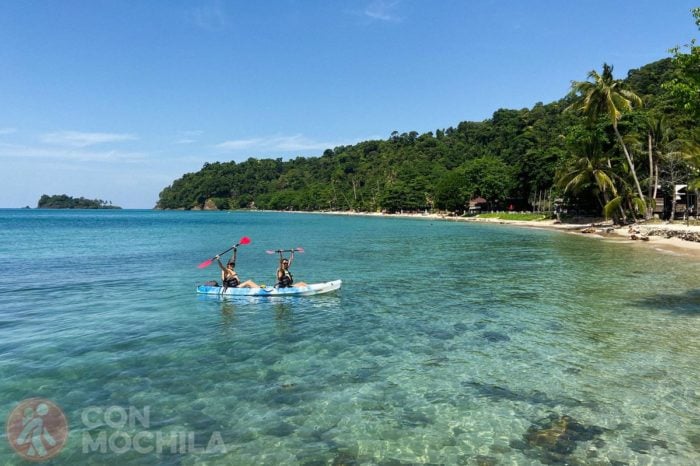
Although it doesn’t have the country’s best beaches, which doesn’t imply they’re unattractive by Southeast Asian standards, it has its advantages: it’s not as far from Bangkok as some other islands, boat trips to nearby islands are possible, and its prices are very reasonable.
On the island of Koh Kood, there isn’t much to do if you don’t like water. Its main attractions are its pristine beaches, where crowds are scarce, waterfalls, century-old trees, and a few giant Buddha statues.
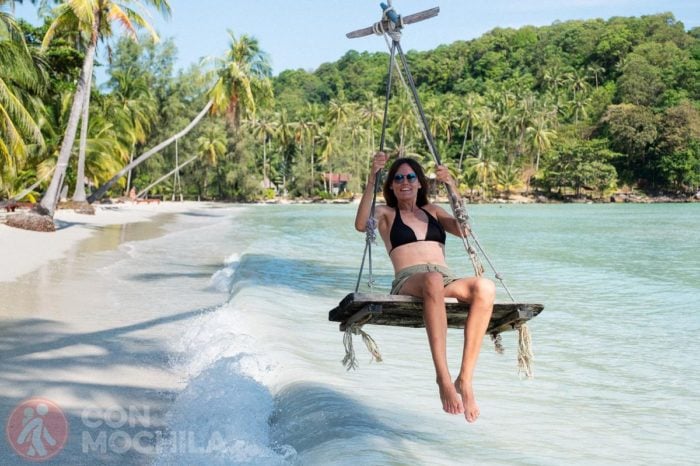
However, it’s not the right destination if you’re seeking a party, or even if you’re looking for some action, as there are only a few restaurants and fewer drinking spots.
Moreover, Koh Kood doesn’t have any 7/11 convenience stores, and they’re not expected either, which speaks a lot about its personality and the island’s desire to remain calm.
For a while, there was a myth saying that Koh Maak was the most beautiful island in Thailand, mainly due to the difficulty to access it and minimal tourist industry. Those were times when it was relatively unknown. Nowadays, it’s a bit more popular, but not excessively so.
Comparisons are unavoidable but necessary in Koh Maak’s case, as it’s located next to Koh Kood, which is a bit larger and has more to offer. Additionally, Koh Kood is undoubtedly more popular and attracts more travelers.
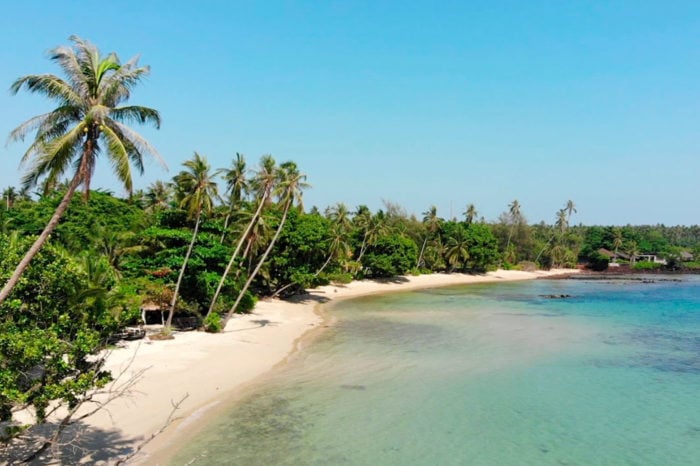
Perhaps what we love most about Koh Maak is that the island has chosen to stay away from tourist crowds. There are limitations on the number of rental motorbikes, foreign businesses are not allowed on the island, and strict rules prohibit littering.
Koh Samet is often referred to as the “beach of Bangkok” due to its proximity to the capital. However, far from being an idyllic place, high prices, crowds, and numerous boats docking on its beaches can sometimes overshadow its beauty.
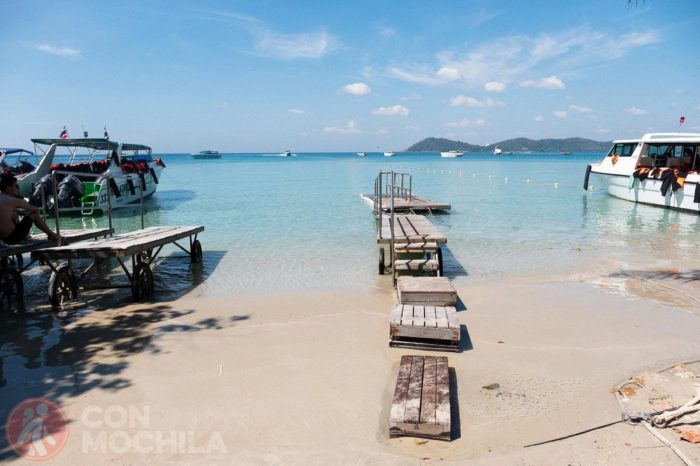
Furthermore, on windy days, the eastern beaches have strong currents, making them less enjoyable. We were so disappointed that we only recommend this island if you’re desperate for a beach and have ruled out all the others for some reason or another.
It’s common to think that in a tourist-heavy country like Thailand, everything would be crowded and overrun by international brands. While this doesn’t take away from the undeniable beauty of places like Phuket or Koh Samui, these islands are typically enjoyed for their vacation atmosphere.
But if you’re looking for nature and remote spots, those also exist. Our guide to Koh Surin aims to reveal a paradise far removed from the tourist industry.
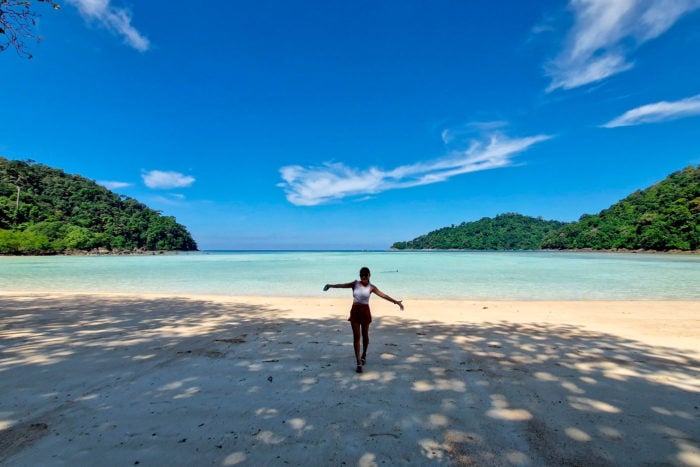
It’s not easy to reach Koh Surin, and that’s one of the reasons it hasn’t become overcrowded. But another significant reason is that it’s considered a protected natural park, hosting a marine environment that some consider among the top 10 in the world.
The western Andaman Sea in Thailand is one of the best places in the world when it comes to marine environments. The Koh Surin archipelago has snorkeling spots ranked among the top 10 globally.
But if you think about diving, the best spot in the entire country and one of the top 10 worldwide is off the coast of Khao Lak, and we introduce it to you in this guide to the Similan Islands.
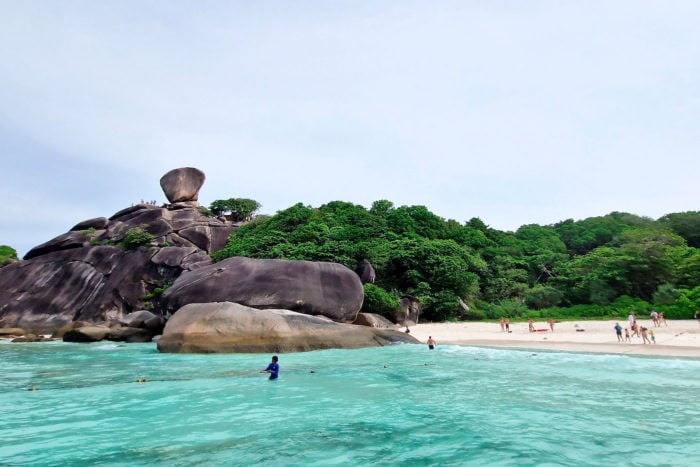
This small group of nine islands—of which only six are accessible—is known for being home to many turtles, so it’s quite common that when you swim in its beautiful snorkeling areas, you’ll find yourself surrounded by them. And to protect these marine animals, three of the islands are completely closed to the public.
In terms of beach tourism in Thailand, Khao Lak is considered a secondary destination. It doesn’t have the fame of Phuket or Koh Samui, but it’s not as remote as, for example, Koh Kood. But that’s not a bad thing; on the contrary. It’s a town with very beautiful beaches, much nicer than the popular Ao Nang in Krabi.
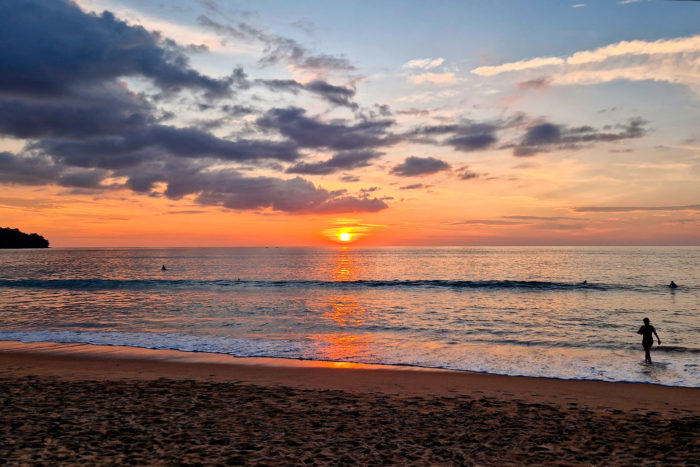
And it’s also the gateway to some of the best paradises in the region.
Hua Hin will never be the destination for those who have very few days in Thailand and want to experience its best beaches, as they are not spectacular. However, those who opt for a quiet and pleasant place with good restaurants and hotels might find it to be the perfect spot for a two or three-day getaway.
The city is worth visiting, as it was the residence for several Thai monarchs and has become a retreat for many retired Westerners.
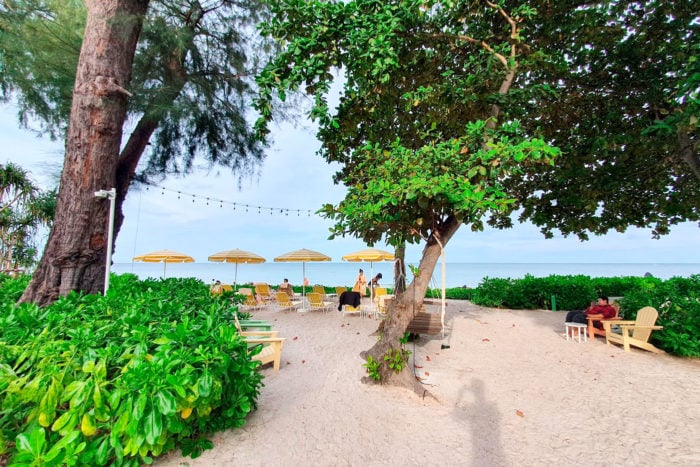
Hua Hin, the favored coastal city of the Thai royal family, is more enjoyable on weekends and it is ideal for those who want to escape a bit from international tourism. There are Thai night markets, a water park, and plenty of seafood restaurants.
Sooner or later, you’ll find yourself in Bangkok, even though we’re not big fans of big cities, we acknowledge that the capital of Thailand has a lot to offer.
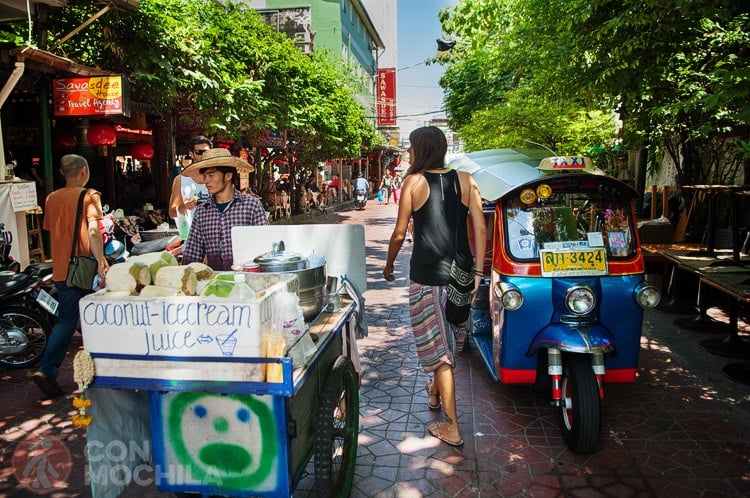
Spend a night near Khao San Road and experience its backpacker atmosphere, visit floating markets like Amphawa, witness the Thai people’s affection for the king at the Royal Palace, marvel at enormous Buddhas (Wat Intharawihan) and reclining Buddhas (Wat Pho), explore the city by navigating the Chao Phraya River, and try your first local dishes.
Devote a couple of days of your trip to this bustling city. After that, the rest of the country will seem like a haven of peace.
If there’s a city in the northern part of the country that we believe every traveler should include in their Thailand itinerary, it’s Chiang Mai. The capital of the province of the same name welcomes tourists from all around the world every day, captivating them with its cultural richness, temples (don’t miss our guide to the temples of Chiang Mai, coming soon), nature, and markets.
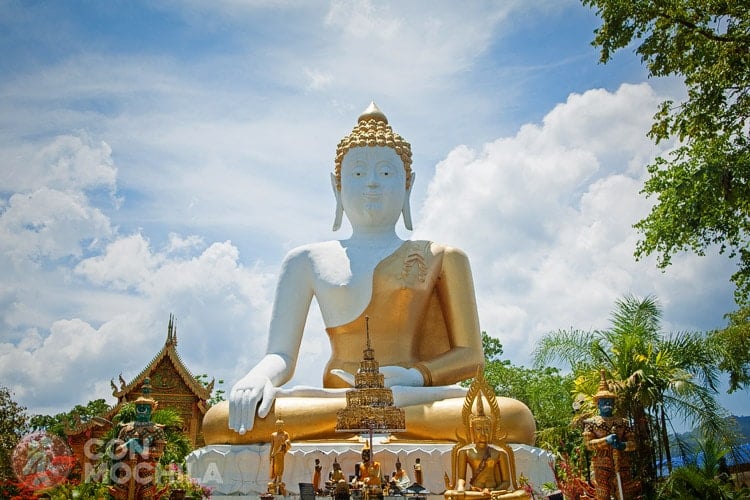
Anchor yourself for a couple of days, take excursions to its surroundings, and get lost in the labyrinthine alleyways of the historic center. There’s nothing like ending the day with a traditional Thai massage or enjoying the views from Wat Phra That Doi Suthep.
The historical city of Ayutthaya is one of Thailand’s main tourist destinations. The ruins of the former capital of the kingdom are today the Ayutthaya Historical Park, which was recognized as a World Heritage Site by UNESCO in 1991.
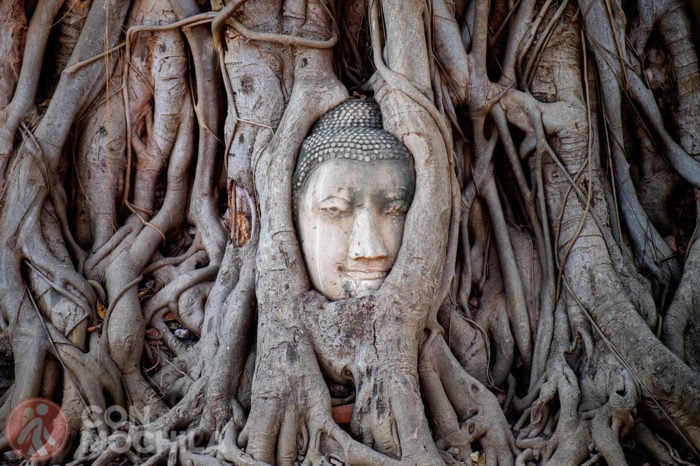
With a unique and decadent history, once being a major center of diplomacy and world trade, Ayutthaya is now an archaeological ruin, characterized by the remains of large prangs (towers) and Buddhist monasteries of monumental proportions that give an idea of the city’s size and the splendor of its architecture.
In the historical park of Sukhothai, there are three different areas to explore, with the central area being the most visited and famous, thanks to Wat Mahathat. It’s a perfect place to rent a bike and spend the day cycling among the remnants of the Sukhothai Kingdom.
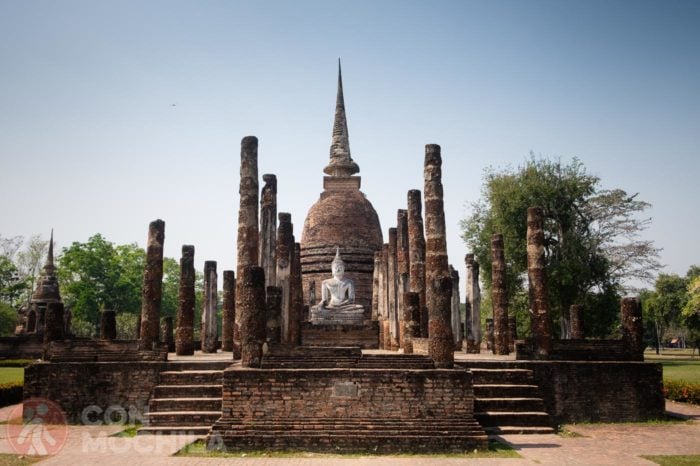
Much quieter than Ayutthaya and considerably less stressful, Sukhothai is well worth a stop on your trip to Thailand. Coming sooon a complete guide to Sukhothai with all the information so that you can visit it at your leisure.
Many people come to Kanchanaburi, the popular town where the famous bridge over the Kwai River is located, on day trips from Bangkok. Added to this, the surrounding areas have so much to offer that we’ve even spent months there ourselves.
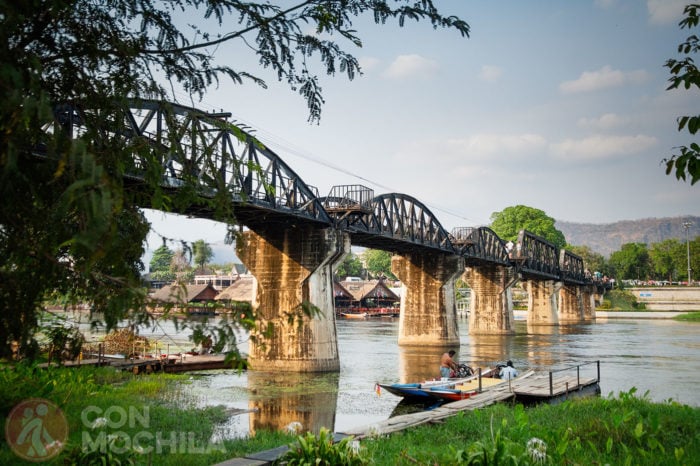
Apart from the wartime history that envelops the city, a short distance away, you can find giant acacia trees, hidden temples at the mouth of a dragon, and multi-tiered waterfalls.
Chiang Rai is a modest city in Northern Thailand, in a province bordering Laos and Myanmar. It’s home to one of the most famous and perhaps the most extravagant temples in the country: the White Temple or Wat Rong Khun. A popular day trip from Chiang Mai. Curiously, its other tourist attraction is the Black House or “Baan Dam.”
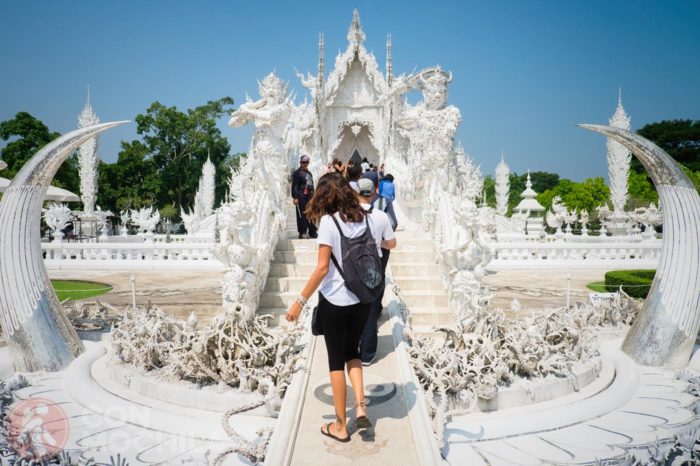
It’s a much quieter destination compared to other cities, but we recommend it if you have several weeks to explore the country.
The small town of Pai, once famous as a hippie destination, has transformed over the years and is now one of the most visited places in the country.
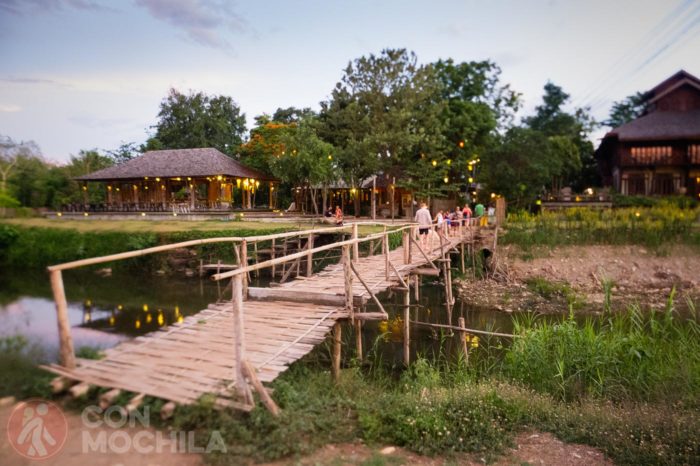
While the atmosphere in this northern town may no longer resemble its former hippie vibe, it remains a much quieter place than other tourist spots, making it an ideal location for a few days of relax, especially if you’ve chosen your accommodations wisely.
Despite being one of Thailand’s oldest cities with an interesting history, Lopburi is now known as the “City of Monkeys” due to the abundance of macaques that roam its streets, particularly in the ancient part.
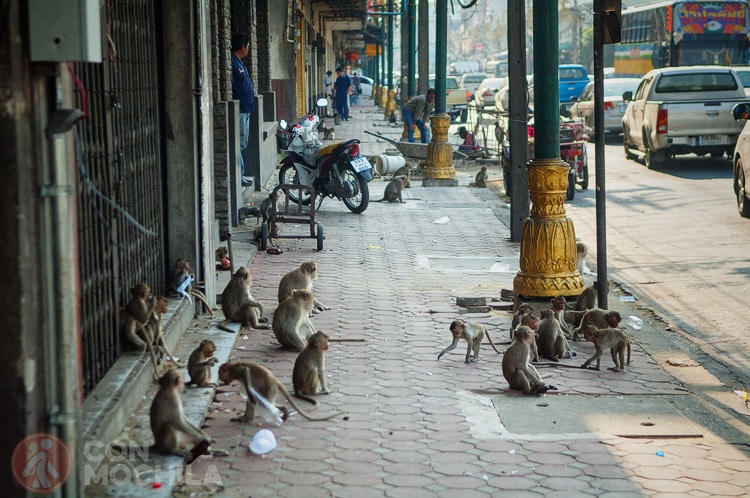
You’ll see them as soon as you arrive by bus, as it usually drops you near one of the temples where many monkeys live. It might be amusing for some and annoying for others, but they’ve earned their reputation as thieves. Beware of your backpack!
This small town near the Burma border has little more than a few temples and a lake for a stroll. That’s why Mae Hong Son doesn’t attract many tourists, creating a more authentic atmosphere.
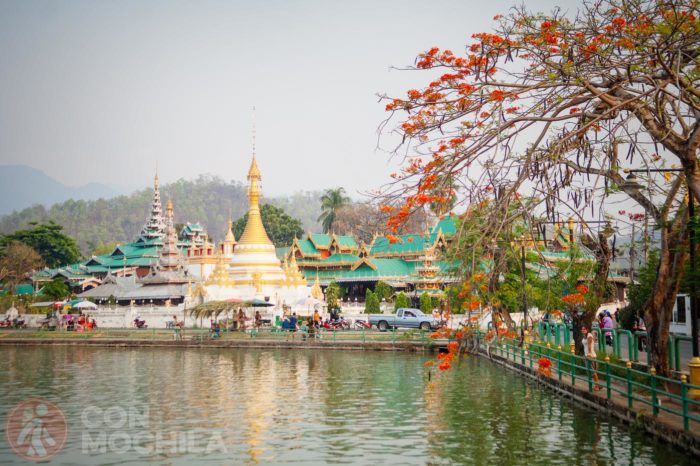
However, it’s one of the points through which the well-known Mae Hong Son Loop route passes, which many travel by motorcycle. We’ve done a couple of sections several times, and you can read about how we completed the Pai – Mae Hong Son stretch in our motorcycle diary (coming soon).
Some places are undeniably beautiful and can make our imagination soar in a photograph. Yet, when tourism turns them into overly exploited attractions, they lose their essence, and when we visit them, we sense that something is amiss.
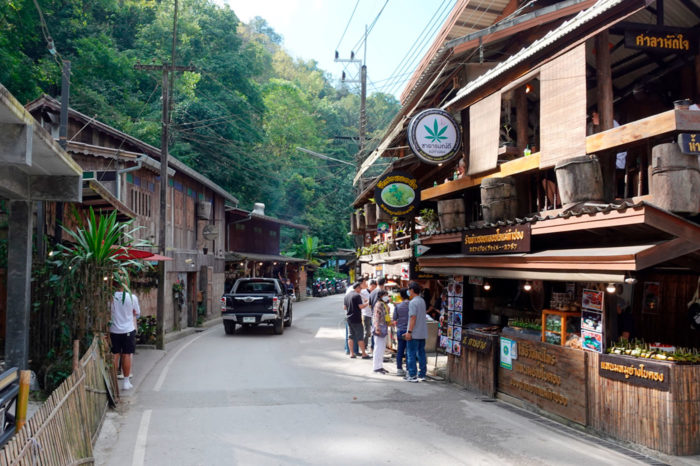
That’s what might happen in Mae Kampong, considered by many to be the most beautiful village in Northern Thailand near Chiang Mai. If you’re the kind of traveler who doesn’t mind tourist-oriented areas and prefers a local life centered around visitors, Mae Kampong could be one of the most beautiful spots in Northern Thailand.
Nong Khai, situated in a small province in Isaan, has become a peaceful city along the Mekong River. The facilities are notable for first-time travelers in Northeastern Thailand: the locals are used to foreigners and speak English. If your plan is to enter Laos from Thailand, why not make a stop in Nong Khai?
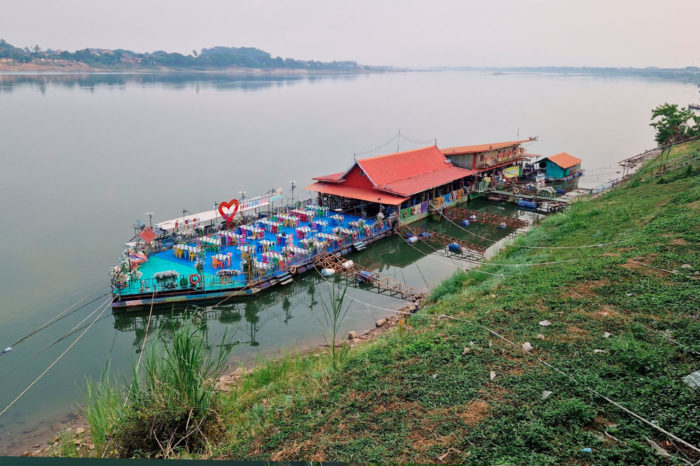
Phitsanulok might not be among Thailand’s major destinations, but if you’re someone who can’t stand endless bus rides and you’re traveling from north to south or vice versa, you can stop in this city and spend a calm afternoon.
Among its attractions, you can take a stroll along the river area and experience the local atmosphere, visit a couple of temples like Wat Ratchaburana, and wander through the night market. The following day, you can continue your journey.
Although most people want to experience riding an elephant, taking a photo with a tiger, or interacting with other animals (like gibbons and wildlife), the truth is that these activities involve animal abuse (in addition to obvious captivity).
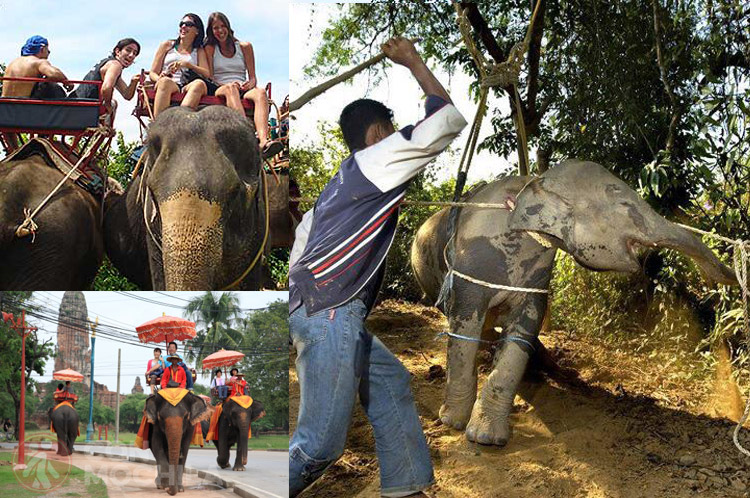
If you don’t want to be part of the spectacle and don’t want to contribute to animal abuse, our recommendation is to educate yourself before visiting any of these places. Get informed and don’t be complicit.
Thailand’s famous tiger centers are neither sanctuaries nor rescue centers, they are merely tourist attractions. By going to these places, you are not helping the species or rescuing specimens from anywhere, but you are part of an industry that breeds tigers for profit and gets rid of them when they are no longer needed.

You are free to do as you please, but don’t say we didn’t warn you 😉 Do you want to know more? Read about Tiger Centers: Common Comments (coming soon) and Reflections, and Reasons Not to Interact with Large Cats on Your Vacation (coming soon).
Elephant sanctuaries are a highly controversial topic. On the one hand, most of them are not true sanctuaries, even if they claim to be, and they are a disguised form of animal exploitation.
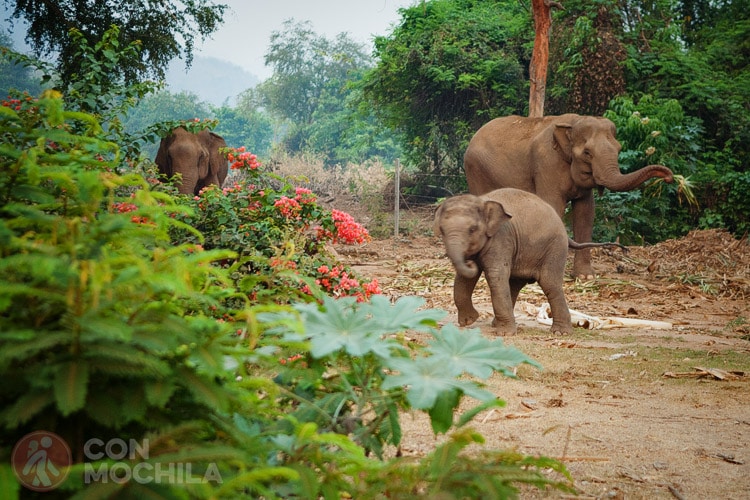
On the other hand, there are centers that rescue elephants and do great awareness-raising work, but they still allow too much contact between elephants and tourists.
If you’re considering visiting an elephant sanctuary, be sure to do your research thoroughly and choose a place where elephants are not forced to work. More information in: Tips for Visiting an Ethical Wildlife Sanctuary (coming soon).
Exploring the underwater world is a fascinating and sometimes unsettling activity for many. Just putting on a snorkeling mask and looking beneath the water’s surface reveals a new world of colors and unknown life forms.
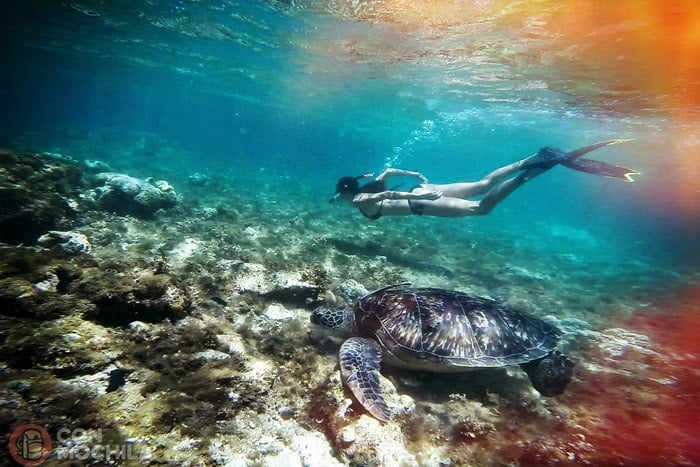
But this world needs to be cared for and respected. If you’re planning a trip that might include snorkeling and you want to ensure your presence doesn’t have a negative impact on the ecosystem, you might be interested in what’s discussed in the link above (coming soon)—what I’ve learned about responsible diving (with or without scuba gear).
Traveling through Thailand you’ll soon discover that some stray animals need help. Many of the animals who live on the streets are injured, mistreated, or suffer from infectious or parasitic diseases.

If you want to help organizations that work with dogs and cats, you can get in touch with Lanta Animal Welfare (in Koh Lanta) or Santisook (in Chiang Mai). Both organizations need veterinarians, assistants, and animal lovers. There’s work for everyone!
Our philosophy, at the beginning, was always “book the first night and then go find hotels as you go” but since people began to travel in masses, new hotels and new “fully booked” signs emerged, along with new booking websites. The advantage is that now you have, within reach of a click, a lot of hotels and guesthouses that you can choose from before arriving at your destination.
We recommend platforms like Booking.com or Agoda.com, which are very active in Southeast Asian countries like Thailand.
Getting around Thailand is quite easy due to the country’s decent infrastructure. For a while now, there have been multiple tools for booking transportation in advance. We recommend 12go.asia, the website we use to book transportation.
How much money do you need to bring? Thailand is relatively affordable compared to places in Europe and it has the advantage that it fits all budgets. If you want to organize a budget-friendly trip to Thailand, you can opt for cheaper hotels and eat at more modest restaurants or even street stalls; street food is a plus in Thailand.
For 10-20€, you can find double rooms with private bathrooms in almost any destination in Thailand, perhaps a bit more in beach areas. Regarding food, you can move from 5-10€ per day per person; add 2-3€ for a beer if you’re a fan of this precious liquid.
As for currency, Thailand uses the baht (THB), the country’s official currency. You can withdraw money from ATMs, but you’ll be charged at least 220 THB per withdrawal. If you prefer, you can exchange currency before traveling with Ria exchange, which offers the best exchange rate on the market. In the previous link you have everything explained in detail.
There are two things we can no longer live without since we started traveling through Asia, both related to filling our stomachs. One is Thai food, and the other one is Indian food. Yes, it’s true that we love spicy food, but if that’s not your thing, don’t worry, you’ll also find dishes that aren’t so fiery.
Don’t miss the article where we talk about Thai cuisine (coming soon) and the dishes you must try on your first trip to Thailand. There are many dishes to choose from, and other people might recommend different ones, but this list is based on what we order the most, the ones we always want to repeat.
Being vegan or vegetarian in Thailand is easy! If you’re a vegetarian or vegan and you are about to visit Thailand, you might be concerned and wondering if eating there will be a nightmare or if instead you will enjoy local flavors.
Click on the image and it will take you to a new Google Maps window with all the points of interest to travel around Thailand.